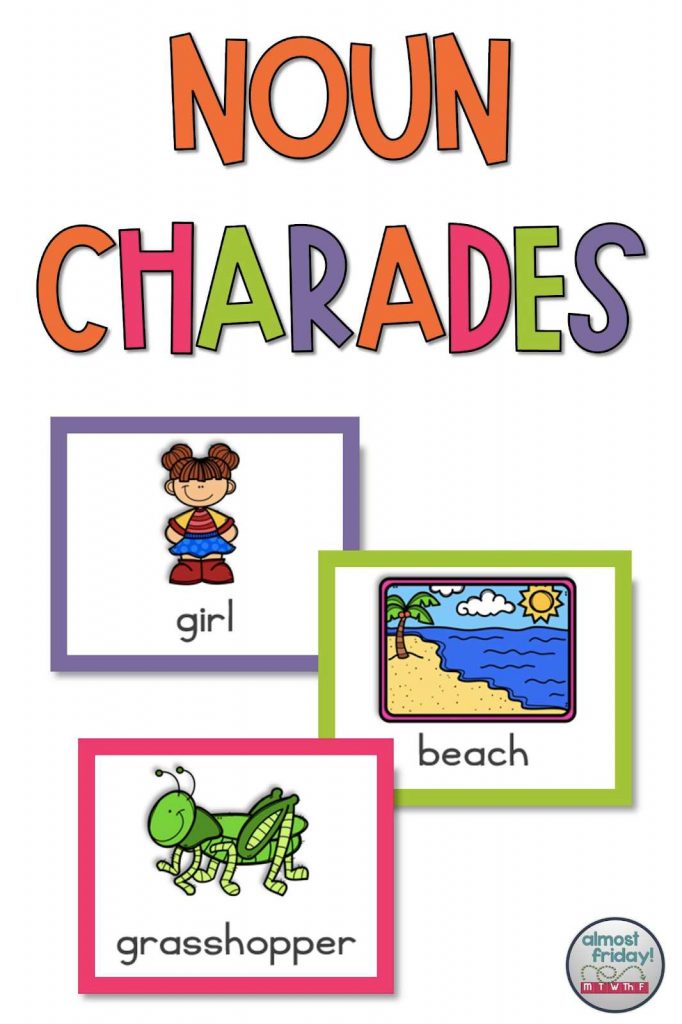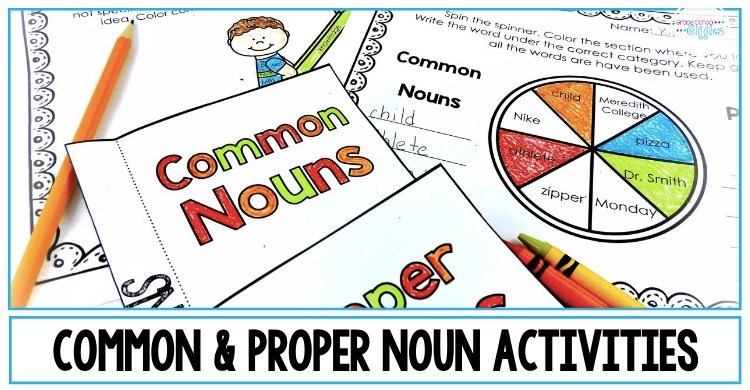Understanding nouns is important because they are the names of people, places, things, and ideas. Knowing the difference between common nouns, like ‘dog’ or ‘city,’ and proper nouns, like ‘Fido’ or ‘New York,’ is a basic skill in English. We will share fun and effective common and proper noun activities to help kids learn about common and proper nouns. These activities are great for teachers to use in the classroom and parents who want to help their kids at home. Keep reading to find out how to make learning about nouns interesting and easy for kids.
Math & ELA | PreK To Grade 5
Kids see fun.
You see real learning outcomes.
Watch your kids fall in love with math & reading through our scientifically designed curriculum.
Parents, try for free Teachers, use for free
What are Common and Proper Nouns?
When teaching common and proper nouns, starting with the basics is important. Let’s break down these two noun types and how they differ.
| Noun Type | Definition | Example | Distinction |
|---|---|---|---|
| Common Nouns | General names for people, places, things, or ideas. They do not start with a capital letter unless at the beginning of a sentence. | Person: teacher, boy, woman <br> Place: city, park, school <br> Thing: book, car, apple <br> Idea: happiness, thought, fear | Refer to a general item or concept |
| Proper Nouns | Specific names for particular people, places, things, or ideas. They always start with a capital letter. | Person: Mr. Smith, Jennifer, Uncle Joe <br> Place: London, Mount Everest, the White House <br> Thing: Titanic, Monday, Christmas <br> Idea: (Proper nouns are usually not used for ideas) | Refer to a specific item or concept |
11 Best Common and Proper Noun Activities for Kids
1. Common Noun and Proper Noun Sorting
This is one of the most engaging common and proper noun activities. In the Noun Sorting activity, kids are given a list of words and asked to classify them into common and proper nouns. You can use flashcards, word lists, or even words from a storybook.
How it Helps: This activity helps children differentiate between common and proper nouns by identifying the unique characteristics of each. It’s a hands-on way for kids to practice and reinforce their understanding of the two types of nouns.
Begin Sorting Noun Here:
2. Common Noun Matching
The Common Noun Matching is simple yet effective among common and proper noun activities. In this activity, children are given cards with common nouns and corresponding proper nouns. Their task is to match each common noun with its specific proper noun. For example, they would match ‘country’ with ‘France’ or ‘city’ with ‘Tokyo’.
How it Helps: This matching activity helps children directly associate common nouns with their specific proper counterparts. It’s an excellent way for kids to visually connect and reinforce their understanding of the relationship between common and proper nouns, enhancing their cognitive skills in categorization and memory.
Here are some engaging noun-matching worksheets that you must checkout:
3. Sentence Construction Challenge
In the Sentence Construction Challenge, kids are given a set of nouns and are tasked with building sentences using them. This mix includes common and proper nouns; the challenge is using them appropriately in context.
How it Helps: This activity is great for applying the knowledge of common and proper nouns in a practical setting. It helps children understand how nouns fit into sentence structures, improving their grammar and writing skills.
Use This Sentence Construction Worksheet to Test Your Kids:
Related Reading: Best Writing Activities for Kids: Creative Pens at Play
4. Unscramble the Noun
The Unscramble the Noun activity is a fun and challenging addition to common and proper noun activities. In this activity, children are given a series of scrambled letters that form either a common or a proper noun. Their task is to unscramble the letters to form the correct noun. For instance, rearranging “pale” to “apple” (a common noun) or “sPari” to “Paris” (a proper noun).
How it Helps: This activity is excellent for developing children’s problem-solving and word-recognition skills. It challenges them to think critically about word structures. As they unscramble the words, they reinforce their understanding of the difference between common and proper nouns, making it a valuable educational exercise.
Start Unscrambling Nouns with this Printable Worksheet:
5. Noun Pictionary
Noun Pictionary is a drawing activity where children pick a card with a noun and then draw it for others to guess. The activity includes both common and proper nouns, adding variety and challenge.
How it Helps: This activity is a fun way to reinforce the understanding of nouns. It encourages children to think about visually representing different nouns, enhancing their comprehension and creative thinking skills.
Spot the Nouns in a Pool of Pictures in this Printable Worksheet:
6. Proper Noun Guessing
The Proper Noun Guessing activity is a fantastic way to teach proper nouns. In this activity, children are given clues about a specific proper noun and have to guess what it is. The clues can be related to people, places, or things. For example, for the proper noun ‘Eiffel Tower’, clues might include ‘a famous landmark in Paris.’
How it Helps: This activity enhances children’s understanding of proper nouns by associating them with unique characteristics or facts. It’s a fun and interactive method that encourages kids to think critically and learn about different proper nouns.
7. Noun Art Gallery

The Noun Art Gallery is one of the most creative common and proper noun activities where children draw or craft items representing both common and proper nouns. After creating their art, they categorize each piece into the correct noun type.
How it Helps: This activity encourages children to creatively express their understanding of nouns. It helps them visually differentiate between common and proper nouns, reinforcing their learning in a fun and artistic way.
8. Noun Bingo

Noun Bingo involves playing bingo using words instead of numbers. Create bingo cards with a mix of common and proper nouns. As each noun is called out, children mark it on their cards. The first to complete a row wins.
How it Helps: This activity makes identifying and differentiating between common and proper nouns exciting. It’s a playful way to reinforce the concepts they’ve learned, enhancing recall and recognition skills.
9. Noun or Proper Noun Flip Book

Among fun activities to teach common and proper nouns, creating a Noun Flip Book is particularly effective. Kids create a flip book with two sections – one for common nouns and another for proper nouns. They can draw or paste pictures and label them with the corresponding nouns.
How it Helps: This activity provides a visual and interactive way for children to categorize nouns. It aids in reinforcing the distinction between common and proper nouns and serves as a handy reference for them to revisit.
10. Common Noun Charades

Common Noun Charade is one of the engaging noun activities where children act out a common noun without speaking, and others guess what it is. This could be anything from an animal to an everyday object.
How it Helps: This activity is great for teaching children about common nouns in a lively and entertaining way. It helps them think about physically representing different objects or concepts, reinforcing their understanding of common nouns.
Related Reading: Great Charades for Kids of All Ages
11. Story Creation
A creative common and proper noun activity, Story Creation involves kids crafting their own stories using a mix of common and proper nouns. Provide them with a list of nouns, or let them devise their own. The challenge is to use these nouns correctly in a story.
How it Helps: This activity encourages children to use common and proper nouns in context, enhancing their understanding and ability to use them in everyday language. It also sparks creativity and imagination.
Related Reading: Tips on How to Learn English (Kids Edition)
How Can I Assess My Students’ Learning?
Assessing students’ understanding of nouns, particularly common and proper nouns, is crucial in tracking their progress and identifying areas that need more focus. Here are some simple strategies to effectively assess their learning:
1. Creating Assessments for Noun Recognition:
- Worksheets: Prepare worksheets that require students to identify and categorize common and proper nouns in sentences.
Here are some worksheets to assess your kid’s knowledge of nouns:
- Fill-in-the-Blanks: Create sentences with missing nouns and ask students to fill in the blanks with either a common or proper noun.
Here are some fill-in-the-blanks worksheets that you can use:
- Multiple-Choice Questions: Use multiple-choice questions to test their ability to distinguish between common and proper nouns.
2. Incorporating Feedback and Reinforcement:
- Immediate Feedback & Progress Tracking:: Provide immediate feedback on their exercises and assessments. This helps students understand their mistakes and learn from them. Keep track of each student’s progress over time. This can help provide personalized support and identify areas needing more practice.
- Positive Reinforcement: Use praise and encouragement to motivate students. Recognizing their efforts and improvements can boost their confidence and interest in learning.
Related Reading: Best Grammar Games for Kids That are Super Fun!
Conclusion
Teaching and learning about common and proper nouns can be fun and engaging, filled with creative activities and innovative assessment methods. Whether in a classroom or a remote learning environment, these strategies enhance students’ understanding and use of nouns, laying a strong foundation for language development.
Related Reading: Best English Language Learning Apps for Kids
Frequently Asked Questions (FAQs)
How can I modify these activities for different learning levels?
For younger or beginner-level learners, use simpler and more familiar nouns, and focus on basic identification. For older or advanced learners, introduce more complex nouns and incorporate activities that involve creating sentences and stories.
Are there any online resources for further learning?
Yes, there are many online resources available. Websites like Splashlearn, Khan Academy, and Starfall offer interactive activities and lessons on nouns. Additionally, educational apps can provide engaging ways for children to practice noun identification and usage.
How can parents support learning at home?
Parents can support learning at home by incorporating noun activities into daily routines, like identifying common and proper nouns during reading time or while out on a walk. Engaging in the activities alongside their children can also be very encouraging.
What are some common mistakes kids make when learning about nouns?
Common mistakes include confusing common nouns with proper nouns, forgetting to capitalize proper nouns, and misidentifying nouns (e.g., confusing them with adjectives). Regular practice and reinforcement can help address these errors.




































